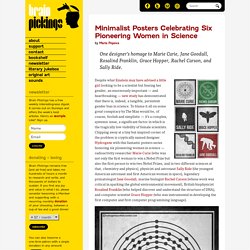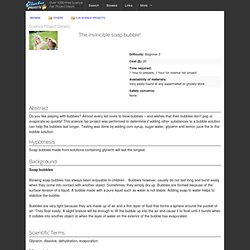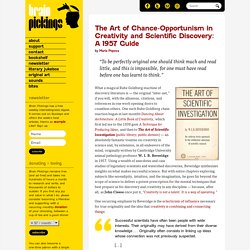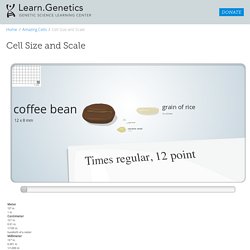

Browse : Collection: Inquiry in Action. Minimalist Posters Celebrating Six Pioneering Women in Science. By Maria Popova One designer’s homage to Marie Curie, Jane Goodall, Rosalind Franklin, Grace Hopper, Rachel Carson, and Sally Ride.

Despite what Einstein may have advised a little girl looking to be a scientist but fearing her gender, an enormously important — and heartbreaking — new study has demonstrated that there is, indeed, a tangible, persistent gender bias in science. To blame it all on some great conspiracy by The Man would be, of course, foolish and simplistic — it’s a complex, systemic issue, a significant factor in which is the tragically low visibility of female scientists. For a comprehensive and thoughtful overview of the gender issue in science and technology that peers beyond the standard explanations, see Julie Des Jadins’s The Madame Curie Complex: The Hidden History of Women in Science. ↬ Science Chicks from History Donating = Loving Bringing you (ad-free) Brain Pickings takes hundreds of hours each month.
Brain Pickings has a free weekly newsletter. Share on Tumblr. Growing Crystals Activity. As of July 1, 2013 ThinkQuest has been discontinued.

We would like to thank everyone for being a part of the ThinkQuest global community: Students - For your limitless creativity and innovation, which inspires us all. Teachers - For your passion in guiding students on their quest. Partners - For your unwavering support and evangelism. Parents - For supporting the use of technology not only as an instrument of learning, but as a means of creating knowledge. We encourage everyone to continue to “Think, Create and Collaborate,” unleashing the power of technology to teach, share, and inspire. Best wishes, The Oracle Education Foundation.
Www.colorado4h.org/k12/activity_sheets/vortex.pdf. Www.arvindguptatoys.com/arvindgupta/simsciexpts.pdf. KS2 Bitesize - Science. Science Fair Projects - The invincible soap bubble! The invincible soap bubble!

Abstract Do you like playing with bubbles? Almost every kid loves to blow bubbles – and wishes that their bubbles don’t pop or evaporate so quickly! This science fair project was performed to determine if adding other substances to a bubble solution can help the bubbles last longer. Testing was done by adding corn syrup, sugar water, glycerin and lemon juice the to the bubble solution. Hypothesis Soap bubbles made from solutions containing glycerin will last the longest. Background Soap bubbles Blowing soap bubbles has always been enjoyable to children. . Bubbles are very light because they are made up of air and a thin layer of fluid that forms a sphere around the pocket of air.
Scientific Terms Glycerin, dissolve, dehydration, evaporation Materials The materials required for this science fair project: Procedure. Fun Science Experiments for Kids - Cool Projects & Easy Ideas for Children. Test Your Dominant Side - Eye, Hand & Foot. What you'll need: A pen or pencil Paper or a notepad to write your findings on An empty tube (an old paper towel tube is good) A cup of water A small ball (or something soft you can throw) Instructions: Write ‘left’ or ‘right’ next to each task depending on what side you used/favored.

When you’ve finished all the challenges review your results and make your own conclusions about which is your dominant eye, hand and foot. Eye tests: Which eye do you use to wink? Hand/Arm tests: Which hand do you use to write? Foot/Leg tests: Science Links. Teacher Resources, Lesson Plans & Educational Worksheets Aligned to Common Core State Standards - Share My Lesson. The Art of Chance-Opportunism in Creativity and Scientific Discovery: A 1957 Guide. By Maria Popova “To be perfectly original one should think much and read little, and this is impossible, for one must have read before one has learnt to think.”

What a magical Rube Goldberg machine of discovery literature is — the original “inter-net,” if you will, with the allusions, citations, and references in one work opening doors to countless others. One such Rube Goldberg chain reaction began in last month’s Dancing About Architecture: A Little Book of Creativity, which first led me to the 1939 gem A Technique for Producing Ideas, and then to The Art of Scientific Investigation (public library; public domain) — an absolutely fantastic treatise on creativity in science and, by extension, in all endeavors of the mind, originally written by Cambridge University animal pathology professor W.
I. B. Cell Size and Scale. Some cells are visible to the unaided eye The smallest objects that the unaided human eye can see are about 0.1 mm long.

That means that under the right conditions, you might be able to see an ameoba proteus, a human egg, and a paramecium without using magnification. A magnifying glass can help you to see them more clearly, but they will still look tiny. Smaller cells are easily visible under a light microscope. It's even possible to make out structures within the cell, such as the nucleus, mitochondria and chloroplasts. To see anything smaller than 500 nm, you will need an electron microscope. Adenine The label on the nucleotide is not quite accurate. How can an X chromosome be nearly as big as the head of the sperm cell? Perpetual Ocean: A Van Gogh-Like Visualization of our Ocean Currents.